Around the Solar System
Advertisements:
NASA's Solar Dynamics Observatory (SDO) spacecraft took this image showing the Sun being partially blocked by Earth on September 6, 2012. Twice a year, for three weeks near the equinox, NASA's Solar Dynamics Observatory (SDO) moves into its eclipse season – a time when Earth blocks its view of the sun for a period of time each day. The Solar Dynamics Observatory (SDO) is a NASA mission which will observe the Sun for over five years. (Photo by Reuters/NASA/SDO/Handout via The Atlantic)
On August 31, 2012, a long filament of solar material that had been hovering in the sun's atmosphere, the corona, erupted out into space at 4:36 p.m. EDT. The coronal mass ejection, or CME, traveled at over 900 miles per second. The CME did not travel directly toward Earth, but did connect with Earth's magnetic environment, or magnetosphere, causing aurora to appear on the night of Monday, September 3. (Photo by NASA/GSFC/SDO via The Atlantic)
This view of the lower front and underbelly areas of NASA's Mars rover Curiosity combines nine images taken by the rover's Mars Hand Lens Imager (MAHLI) during the 34th Martian day, or sol, of Curiosity's work on Mars, on September 9, 2012. Curiosity's front Hazard-Avoidance cameras appear as a set of four blue eyes at the top center of the portrait. Fine-grain Martian dust can be seen adhering to the wheels, which are about 16 inches (40 centimeters) wide and 20 inches (50 centimeters) in diameter. The bottom of the rover is about 26 inches (66 centimeters) above the ground. On the horizon at the right is a portion of Mount Sharp, with dark dunes at its base. The camera is in the turret of tools at the end of Curiosity's robotic arm. (Photo by NASA/JPL-Caltech/Malin Space Science Systems via The Atlantic)
The Soyuz TMA-03M spacecraft floats down to Earth with Expedition 31 Commander Oleg Kononenko of Russia and Flight Engineers Don Pettit of NASA and Andre Kuipers of the European Space Agency on board in their Soyuz TMA-03M capsule in a remote area of the Kazakh Steppe on July 1, 2012 near the town of Zhezkazgan, Kazakhstan. Pettit, Kononenko and Kuipers returned from more than six months onboard the International Space Station, where they served as members of the Expedition 30 and 31 crews. (Photo by Bill Ingalls/NASA via The Atlantic)
The view taken from a mounted camera on the International Space Station, from approximately 240 miles above Earth. A total of 47 images were used to create the composite. (Photo by Reuters/NASA/Handout via The Atlantic)
On Mars, NASA's Rover Opportunity catches its own late-afternoon shadow in this dramatically lit view eastward across Endeavour Crater. The rover used the panoramic camera (Pancam) between about 4:30 and 5:00 p.m. local Mars time to record images taken through different filters and combined into this mosaic view. Most of the component images were recorded during the 2,888th Martian day, or sol, of Opportunity's work on Mars (March 9, 2012). At that time, Opportunity was spending low-solar-energy weeks of the Martian winter at the Greeley Haven outcrop on the Cape York segment of Endeavour's western rim. Opportunity has been studying the western rim of Endeavour Crater since arriving there in August 2011. This crater spans 14 miles (22 kilometers) in diameter, or about the same area as the city of Seattle. (Photo by NASA/JPL-Caltech/Cornell/Arizona State Univ. via The Atlantic)
MESSENGER, NASA's spacecraft orbiting Mercury, captured this June 03, 2012 scene near the recently named crater Magritte. Shadowing helps define a striking [Mickey Mouse] resemblance, created by the accumulation of craters over Mercury's long geologic history. (Photo by NASA/Johns Hopkins University Applied Physics Laboratory/Carnegie Institution of Washington via The Atlantic)
Polar mesopheric clouds at the peak of their visibility, seen from the International Space Station, on June 13, 2012. (Photo by Reuters/ISS/NASA via The Atlantic)
Above the Earth, NASA astronaut Sunita Williams, Expedition 32 flight engineer, appears to touch the bright sun during the mission's third session of extravehicular activity (EVA) on September 5, 2012. During the six-hour, 28-minute spacewalk, Williams and Japan Aerospace Exploration Agency astronaut Aki Hoshide (visible in the reflections of Williams' helmet visor), flight engineer, completed the installation of a Main Bus Switching Unit (MBSU) that was hampered by a possible misalignment and damaged threads where a bolt must be placed. They also installed a camera on the International Space Station's robotic arm, Canadarm2. (Photo by NASA via The Atlantic)
The [Mighty Eagle] soars above the tree line on August 16, 2012. The vehicle was [open loop] – navigating autonomously without the command of the onboard camera and flying on a preprogrammed flight profile. This NASA robotic prototype lander sailed to an altitude of 100 feet during another successful free flight August 28 at NASA's Marshall Space Flight Center in Huntsville, Alabama. The test is part of a new series of free flights testing the robotic prototype lander's autonomous rendezvous and capture capabilities. (Photo by NASA/MSFC/Fred Deaton via The Atlantic)
A brightly reflective Enceladus appears before the rings of Saturn, while the planet's larger moon Titan looms in the distance. Enceladus (313 miles, or 504 kilometers across) is in the center of the image. Titan (3,200 miles, or 5,150 kilometers across) glows faintly in the background beyond the rings, in this image acquired by NASA's Cassini spacecraft on March 12, 2012. (Photo by NASA/JPL-Caltech/Space Science Institute via The Atlantic)
Astronaut Andre Kuipers watches a bubble in a drop of water as he enjoys his last days of weightlessness aboard the International Space Station, on June 24, 2012. (Photo by AP Photo/NASA, Andre Kuipers via The Atlantic)
A model of the 70-metric-ton configuration of the SLS rocket, designed to carry the Orion spacecraft, is tested in the Trisonic Wind Tunnel at NASA's Marshall Space Flight Center, on August 23, 2012. This view uses special cameras and a deflection of light (Schlieren flow visualization) directed through the windows in the tunnel to show the shadows of airflow as it changes angles at high speeds, helping visualize the various intense pressures of atmosphere on the model. (Photo by NASA/MSFC via The Atlantic)
This image is from a test series used to characterize the 100-millimeter Mast Camera on NASA's Curiosity rover. It was taken on August 23, 2012, and looks south-southwest from the rover's landing site. The 100-millimeter Mastcam has three times better resolution than Curiosity's 34-millimeter Mastcam, though it has a narrower field of view. In the distance, there are dark dunes and then the layered rock at the base of Mount Sharp. Some haze obscures the view, but the top ridge, depicted in this image, is 10 miles (16.2 kilometers) away. Scientists enhanced the color in this version to show the Martian scene under the lighting conditions we have on Earth, which helps in analyzing the terrain. (Photo by NASA/JPL-Caltech/MSSS via The Atlantic)
The Chemistry and Camera (ChemCam) instrument on NASA's Mars rover Curiosity used its laser to examine side-by-side points in a target patch of soil, leaving the marks apparent in this before-and-after comparison. The two images were taken by ChemCam's Remote Micro-Imager from a distance of about 11.5 feet (3.5 meters). The diameter of the circular field of view is about 3.1 inches (7.9 centimeters). Researchers used ChemCam to study this soil target, named "Beechey," during the 19th Martian day, or sol, of Curiosity's mission, August 25, 2012. (Photo by NASA/JPL-Caltech/LANL/CNES/IRAP/LPGN/CNRS via The Atlantic)
This undated image taken by the NASA's Dawn spacecraft shows the south pole of the giant asteroid Vesta. After spending a year examining Vesta, Dawn was poised to depart and head to another asteroid Ceres, where it will arrive in 2015. (Photo by AP Photo/NASA via The Atlantic)
The setting sun highlights cloud patterns – as well as the Pacific Ocean surface itself – in this photograph taken by an astronaut aboard the International Space Station, on May 15, 2012. The ISS was located over the Andes Mountains of central Chile at the time. The camera view is looking back towards the Pacific Ocean as the Sun was setting in the west. (Photo by NASA via The Atlantic)
The penny in this image is part of a camera calibration target on NASA's Mars rover Curiosity. The MAHLI camera on the rover took this and other images of the MAHLI calibration target on September 9, 2012. The penny is a nod to geologists' tradition of placing a coin or other object of known scale as a size reference in close-up photographs of rocks, and it gives the public a familiar object for perceiving size easily when it will be viewed by MAHLI on Mars. The specific coin, provided by MAHLI's principal investigator, Ken Edgett, is a 1909 "VDB" penny. That was the first year Lincoln pennies were minted and the centennial of Abraham Lincoln's birth. The VDB refers to the initials of the coin's designer, Victor D. Brenner, which are on the reverse side. The calibration target for the Mars Hand Lens Imager (MAHLI) instrument also includes a [Joe the Martian] character, color references, a metric bar graphic, and a stair-step pattern for depth calibration. (Photo by NASA/JPL-Caltech/Malin Space Science Systems via The Atlantic)
A giant of a moon appears before a giant of a planet undergoing seasonal changes in this natural color view of Titan and Saturn from NASA's Cassini spacecraft, on May 6, 2012. As the seasons have changed in the Saturnian system, and spring has come to the north and autumn to the south, the azure blue in the northern Saturnian hemisphere that greeted Cassini upon its arrival in 2004 is now fading. The southern hemisphere, in its approach to winter, is taking on a bluish hue. This change is likely due to the reduced intensity of ultraviolet light and the haze it produces in the hemisphere approaching winter, and the increasing intensity of ultraviolet light and haze production in the hemisphere approaching summer. (Photo by NASA/JPL-Caltech/SSI via The Atlantic)
This image, taken by the Hubble Space Telescope, shows the five known moons orbiting the distant, icy dwarf planet Pluto. The green circle marks the newly discovered moon, designated S/2012 (134340) 1, or P5, as photographed by Hubble's Wide Field Camera 3 on 7 July 2012. The moon is estimated to be 10 to 25 kilometers across. It is in a 95,000 kilometer diameter circular orbit around Pluto that is assumed to be aligned in the same plane as the other satellites in the system. The darker stripe in the center of the image is because the picture is constructed from a long exposure designed to capture the comparatively faint satellites of Nix, Hydra, P4 and S/2012 (134340) 1, and a shorter exposure to capture Pluto and Charon, which are much brighter. NASA's New Horizons probe, which will rendezvous with Pluto in July of 2015, was launched in 2006 – back then, Pluto only had three known moons. (Photo by Mr. Showalter/AFP via The Atlantic)
The left eye of the Mast Camera (Mastcam) on NASA's Mars rover Curiosity took this image of the MAHLI camera on the rover's arm, on Mars, on September 5, 2012. The image shows that MAHLI has a thin film or coating of Martian dust on it. This dust accumulated during Curiosity's final descent to the Martian surface, as the Mars Science Laboratory spacecraft's descent stage (or sky crane) engines were disrupting the surface nearby. The reddish circle near the center of the Mastcam Sol 30 image is the window of MAHLI's dust cover, with a diameter a little less than a soda can's diameter. The mechanism at the right in this image is Curiosity's dust removal tool, a motorized wire brush. (Photo by NASA/JPL-Caltech/MSSS via The Atlantic)
On September 8, 2012, Curiosity's Mars Hand Lens Imager (MAHLI) took this detailed image of Martian soil. The patch of ground shown is about 34 inches (86 centimeters) across. The size of the largest pebble, near the top of the image, is about 3 inches (8 centimeters). Notice that the ground immediately around that pebble has less dust visible (more gravel exposed) than in other parts of the image. The presence of the pebble may have affected the wind in a way that preferentially removes dust from the surface around it. (Photo by NASA/JPL-Caltech/Malin Space Science Systems via The Atlantic)
Tracks mark the surface of Mars, after NASA's rover Curiosity drove about 70 feet (about 21 meters) on the mission's 21st Martian day, and then took images with its Navigation Camera that were combined into this scene, which includes the fresh tracks. (Photo by NASA/JPL-Caltech via The Atlantic)
A true color image of Titan's colorful south polar vortex captured by NASA's Cassini spacecraft before a distant flyby of Saturn's moon Titan on June 27, 2012, shows a south polar vortex, or a mass of swirling gas, around the pole in the atmosphere of the moon. The south pole of Titan which is 3,200 miles (5,150 km) across is near the center of the view. The formation of the vortex at Titan's south pole may be related to the coming southern winter and the start of what will be a south polar hood. These new, more detailed images are only possible because of Cassini's newly inclined orbits, which are the next phase of Cassini Solstice Mission. (Photo by Reuters/NASA/JPL-Caltech/Space Science Institute/Handout via The Atlantic)
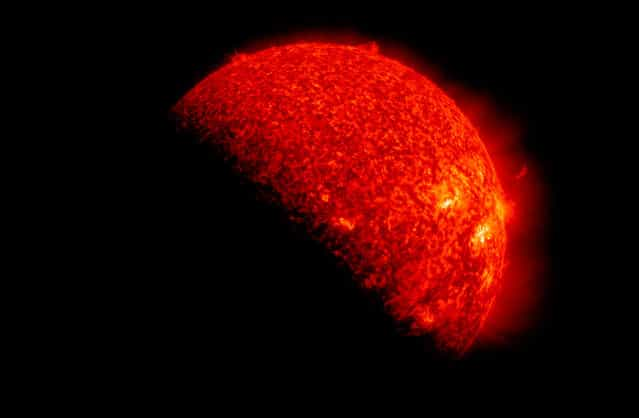
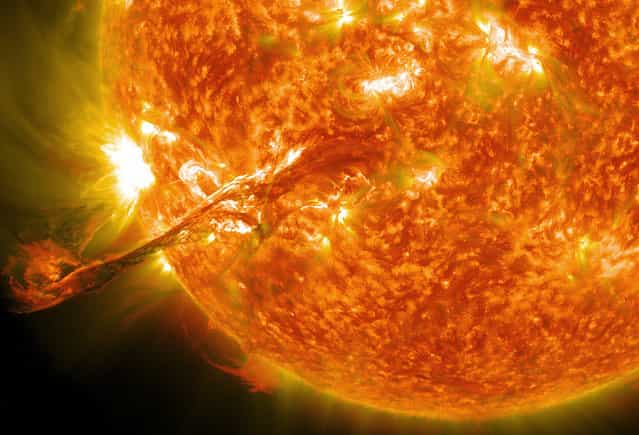
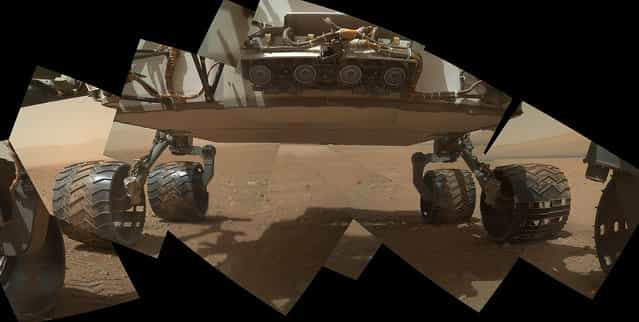
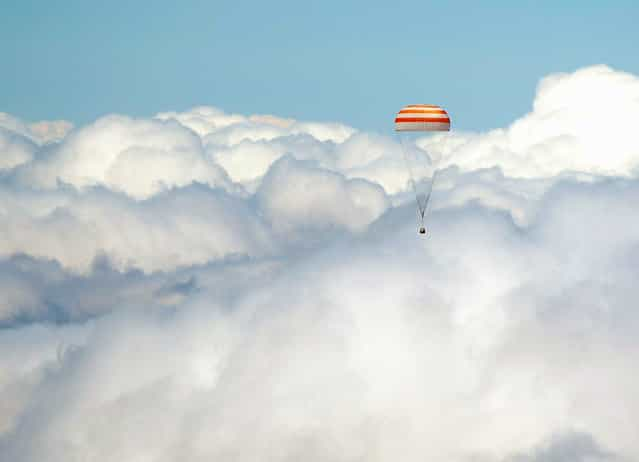
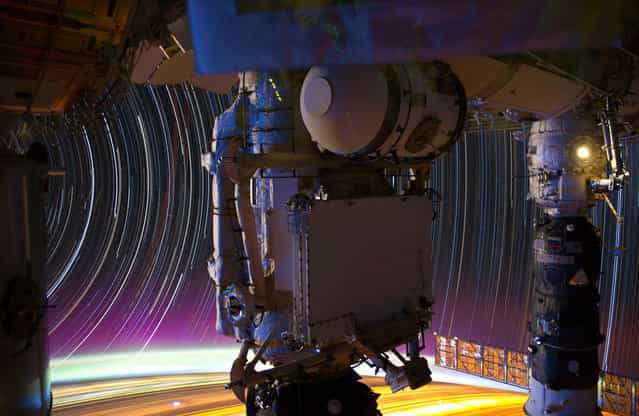
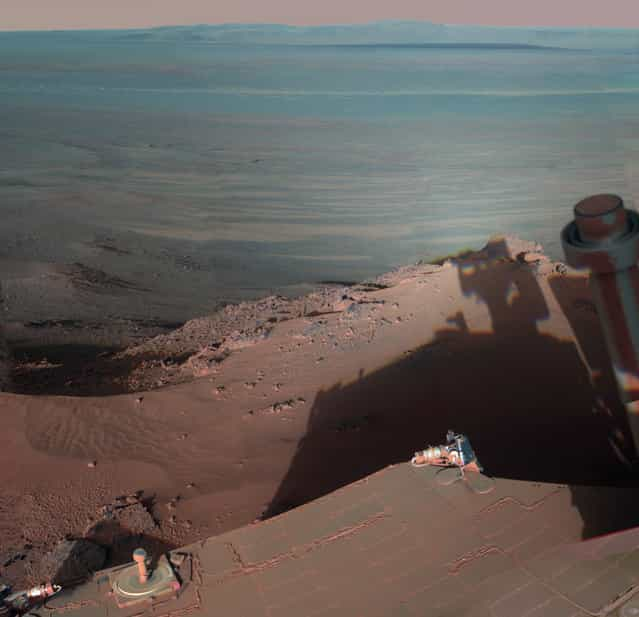
![MESSENGER, NASA's spacecraft orbiting Mercury, captured this June 03, 2012 scene near the recently named crater Magritte. Shadowing helps define a striking [Mickey Mouse] resemblance, created by the accumulation of craters over Mercury's long geologic history. (Photo by NASA/Johns Hopkins University Applied Physics Laboratory/Carnegie Institution of Washington) MESSENGER, NASA's spacecraft orbiting Mercury, captured this June 03, 2012 scene near the recently named crater Magritte. Shadowing helps define a striking [Mickey Mouse] resemblance, created by the accumulation of craters over Mercury's long geologic history. (Photo by NASA/Johns Hopkins University Applied Physics Laboratory/Carnegie Institution of Washington)](http://img.gagdaily.com/uploads/posts/app/2013/thumbs/00009343_medium.jpg)
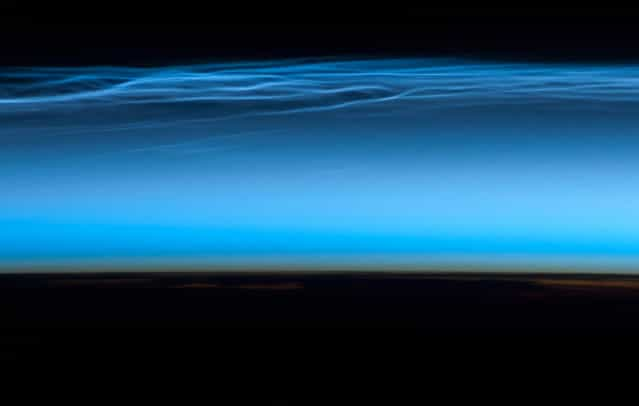
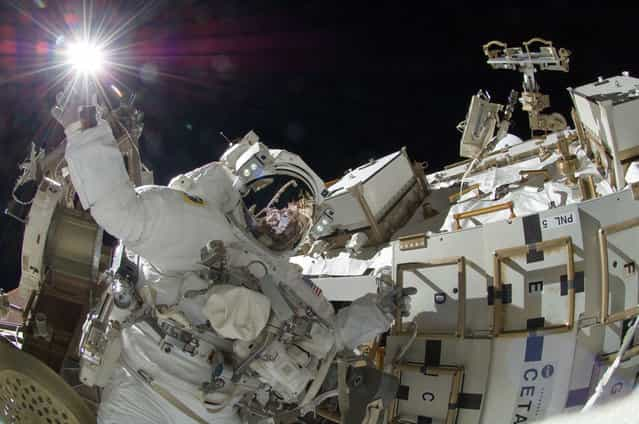
![The [Mighty Eagle] soars above the tree line on August 16, 2012. The vehicle was [open loop] – navigating autonomously without the command of the onboard camera and flying on a preprogrammed flight profile. This NASA robotic prototype lander sailed to an altitude of 100 feet during another successful free flight August 28 at NASA's Marshall Space Flight Center in Huntsville, Alabama. The test is part of a new series of free flights testing the robotic prototype lander's autonomous rendezvous and capture capabilities. (Photo by NASA/MSFC/Fred Deaton) The [Mighty Eagle] soars above the tree line on August 16, 2012. The vehicle was [open loop] – navigating autonomously without the command of the onboard camera and flying on a preprogrammed flight profile. This NASA robotic prototype lander sailed to an altitude of 100 feet during another successful free flight August 28 at NASA's Marshall Space Flight Center in Huntsville, Alabama. The test is part of a new series of free flights testing the robotic prototype lander's autonomous rendezvous and capture capabilities. (Photo by NASA/MSFC/Fred Deaton)](http://img.gagdaily.com/uploads/posts/app/2013/thumbs/0000934b_medium.jpg)
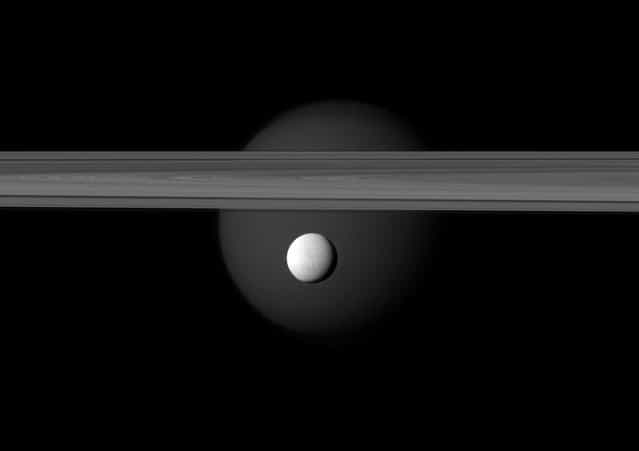

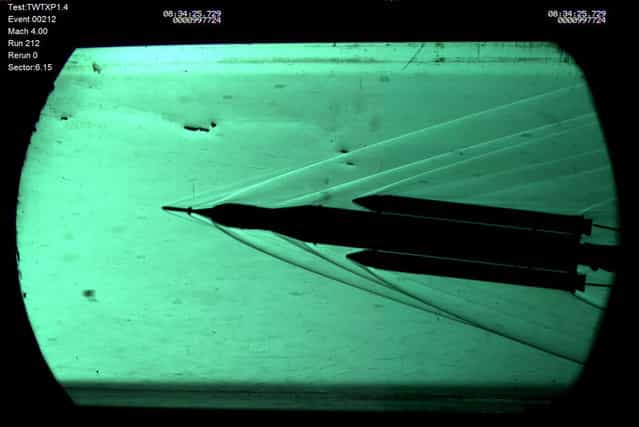
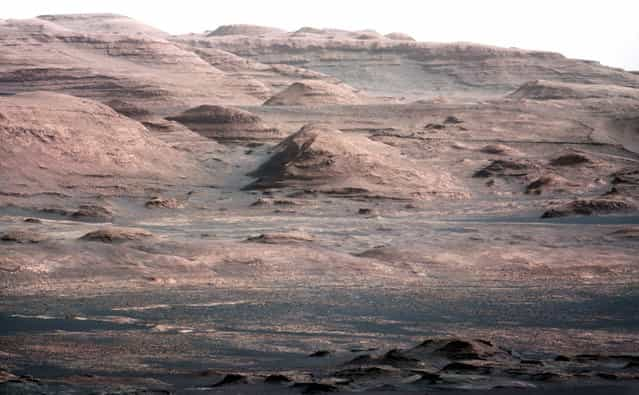
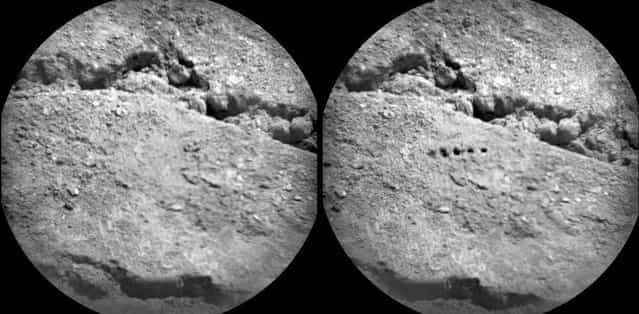
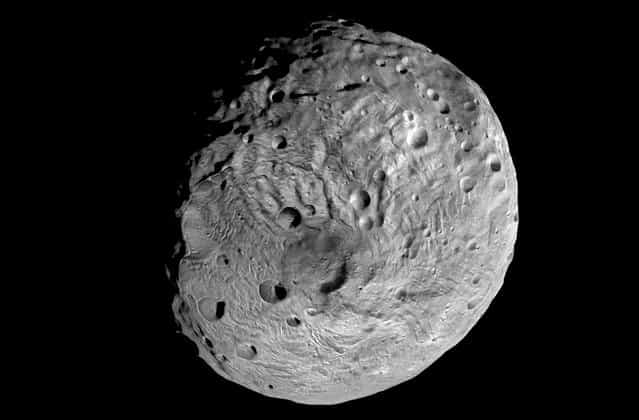
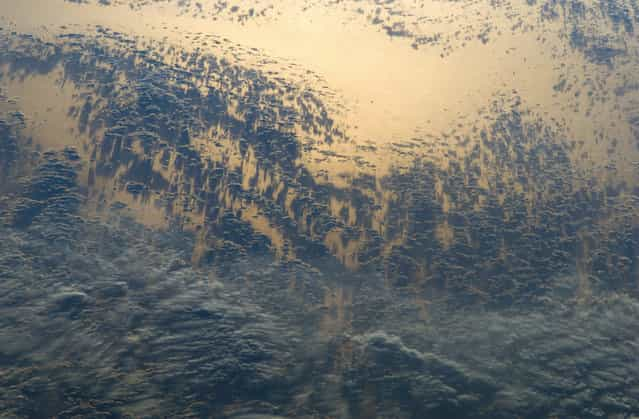
![The penny in this image is part of a camera calibration target on NASA's Mars rover Curiosity. The MAHLI camera on the rover took this and other images of the MAHLI calibration target on September 9, 2012. The penny is a nod to geologists' tradition of placing a coin or other object of known scale as a size reference in close-up photographs of rocks, and it gives the public a familiar object for perceiving size easily when it will be viewed by MAHLI on Mars. The specific coin, provided by MAHLI's principal investigator, Ken Edgett, is a 1909 "VDB" penny. That was the first year Lincoln pennies were minted and the centennial of Abraham Lincoln's birth. The VDB refers to the initials of the coin's designer, Victor D. Brenner, which are on the reverse side. The calibration target for the Mars Hand Lens Imager (MAHLI) instrument also includes a [Joe the Martian] character, color references, a metric bar graphic, and a stair-step pattern for depth calibration. (Photo by NASA/JPL-Caltech/Malin Space Science Systems) The penny in this image is part of a camera calibration target on NASA's Mars rover Curiosity. The MAHLI camera on the rover took this and other images of the MAHLI calibration target on September 9, 2012. The penny is a nod to geologists' tradition of placing a coin or other object of known scale as a size reference in close-up photographs of rocks, and it gives the public a familiar object for perceiving size easily when it will be viewed by MAHLI on Mars. The specific coin, provided by MAHLI's principal investigator, Ken Edgett, is a 1909 "VDB" penny. That was the first year Lincoln pennies were minted and the centennial of Abraham Lincoln's birth. The VDB refers to the initials of the coin's designer, Victor D. Brenner, which are on the reverse side. The calibration target for the Mars Hand Lens Imager (MAHLI) instrument also includes a [Joe the Martian] character, color references, a metric bar graphic, and a stair-step pattern for depth calibration. (Photo by NASA/JPL-Caltech/Malin Space Science Systems)](http://img.gagdaily.com/uploads/posts/app/2013/thumbs/00009351_medium.jpg)
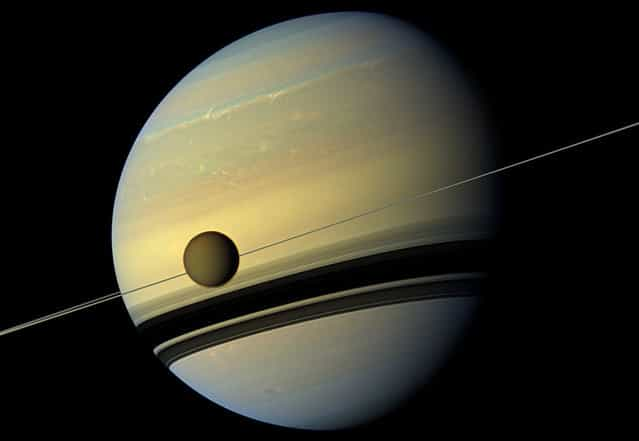
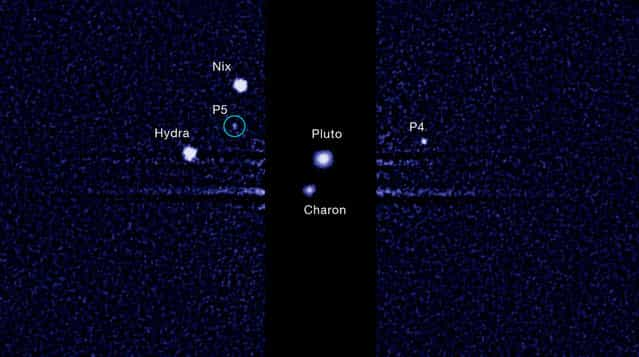

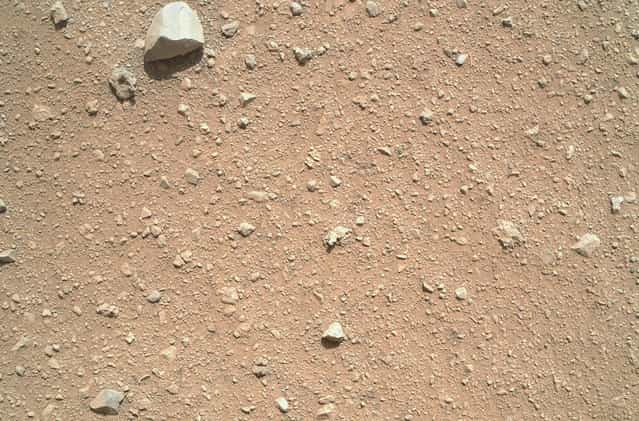
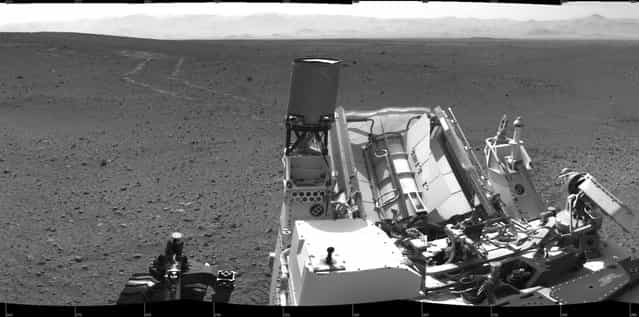
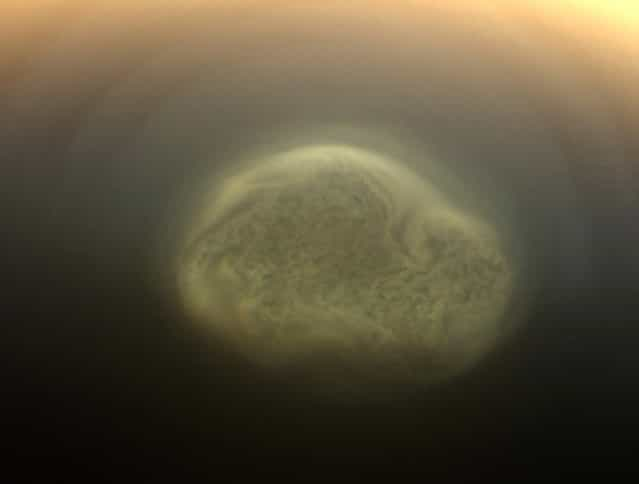
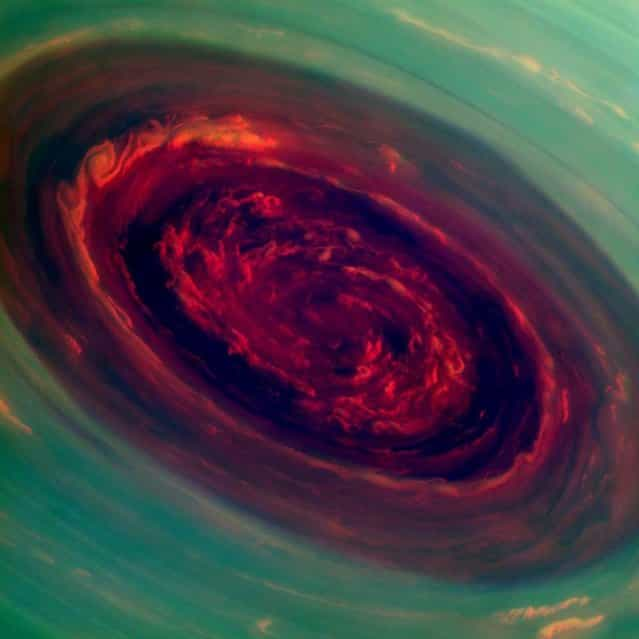
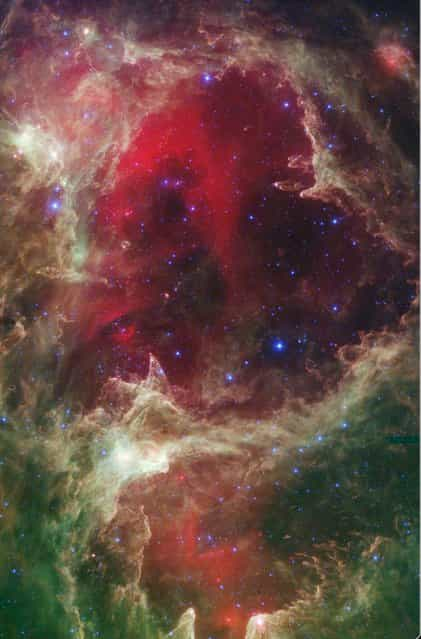
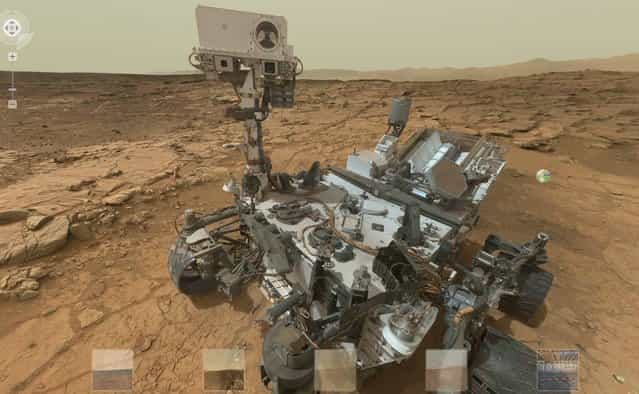
![Mars Curiosity Rover Team Looks Back at [Flower] Looks Ahead to Drilling Mars Curiosity Rover Team Looks Back at [Flower] Looks Ahead to Drilling](http://img.gagdaily.com/uploads/posts/app/2013/short/0000b133_medium.jpg)

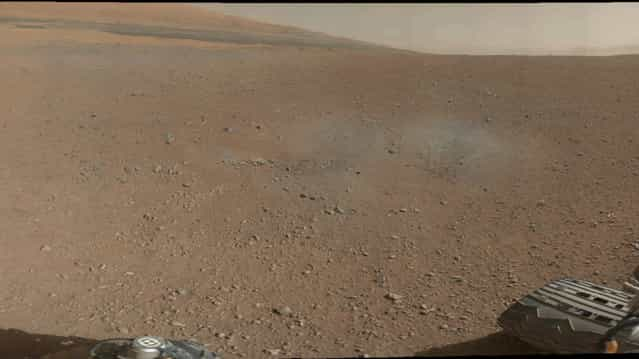
![[9 Years on Mars] [9 Years on Mars]](http://img.gagdaily.com/uploads/posts/edu/2013/short/0000b988_medium.jpg)
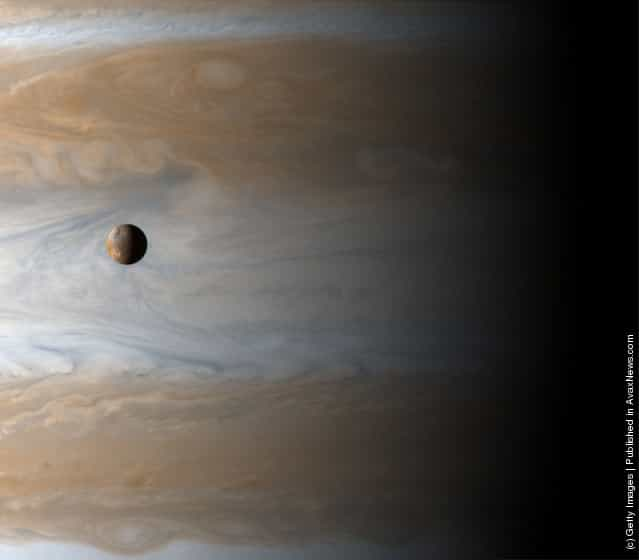

![Rare [Hybrid] Total Solar Eclipse Rare [Hybrid] Total Solar Eclipse](http://img.gagdaily.com/uploads/posts/fact/2013/short/00010c55_medium.jpg)






